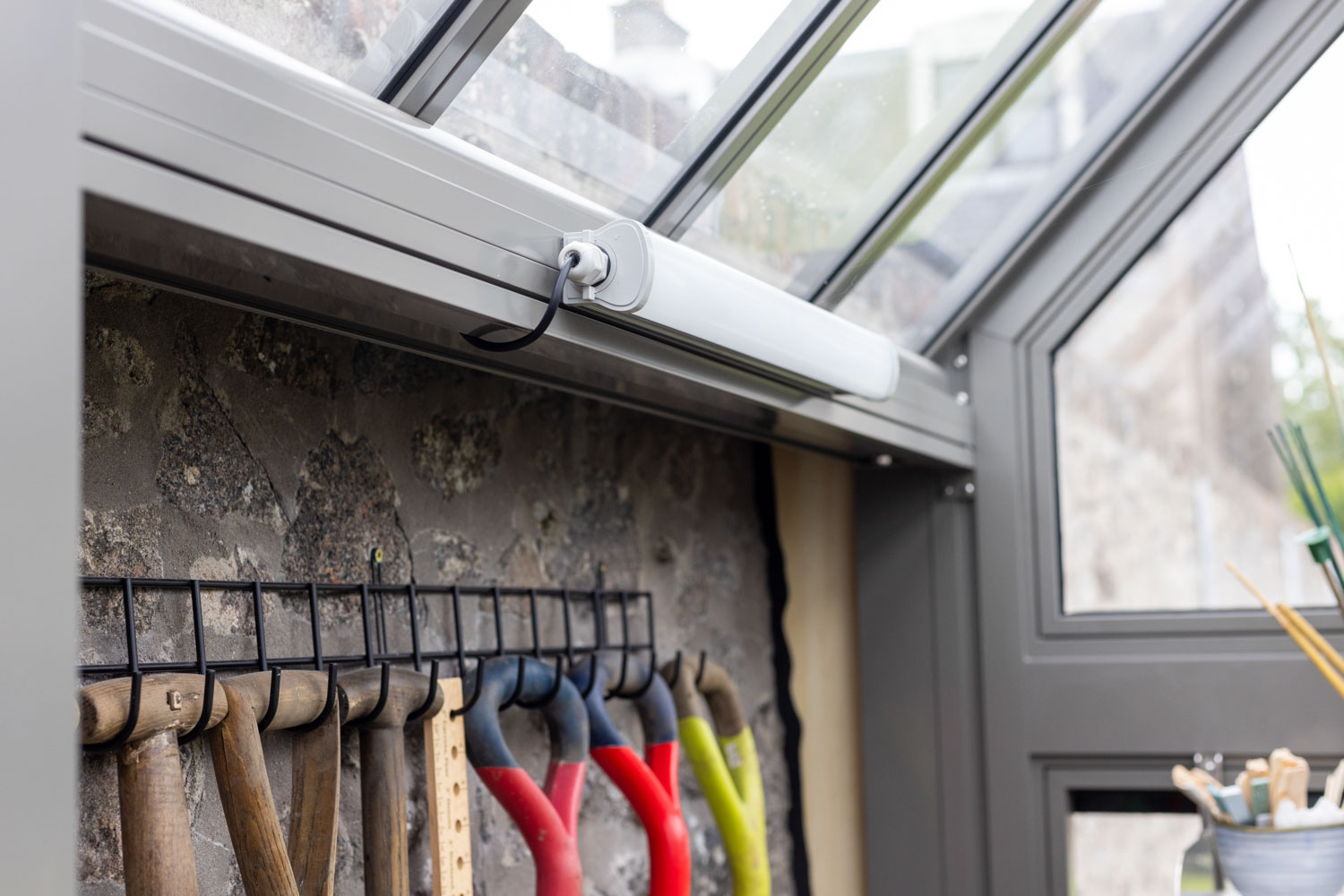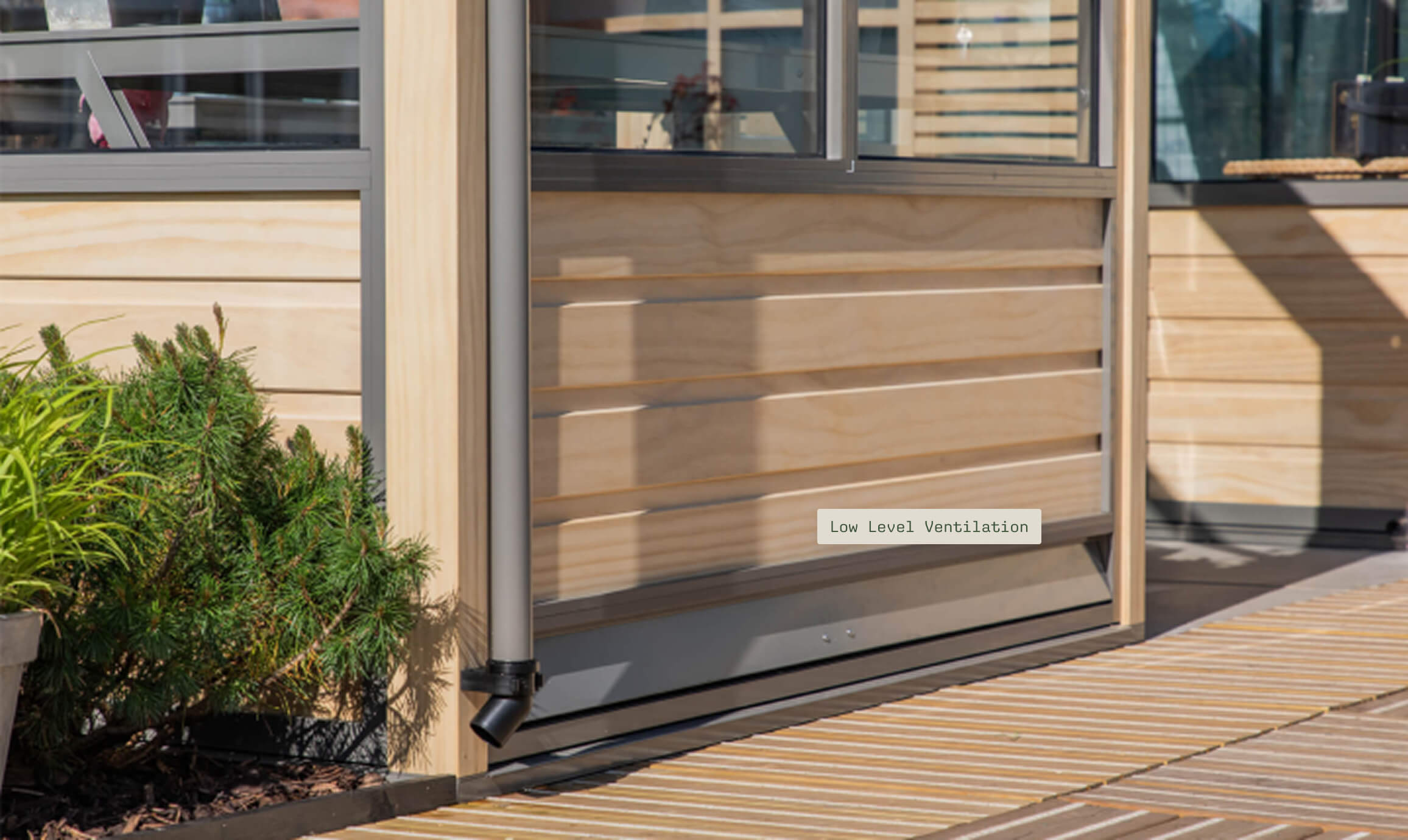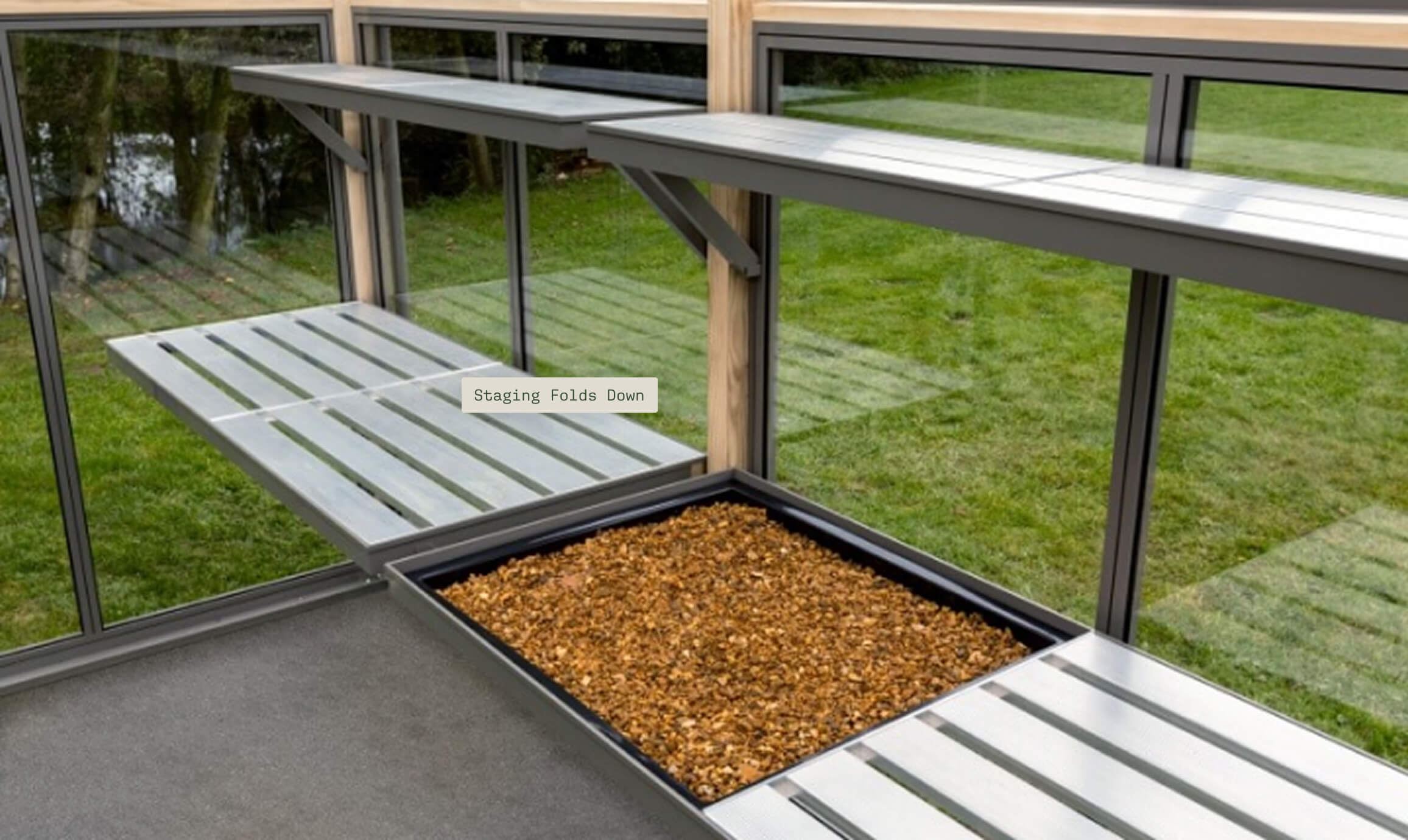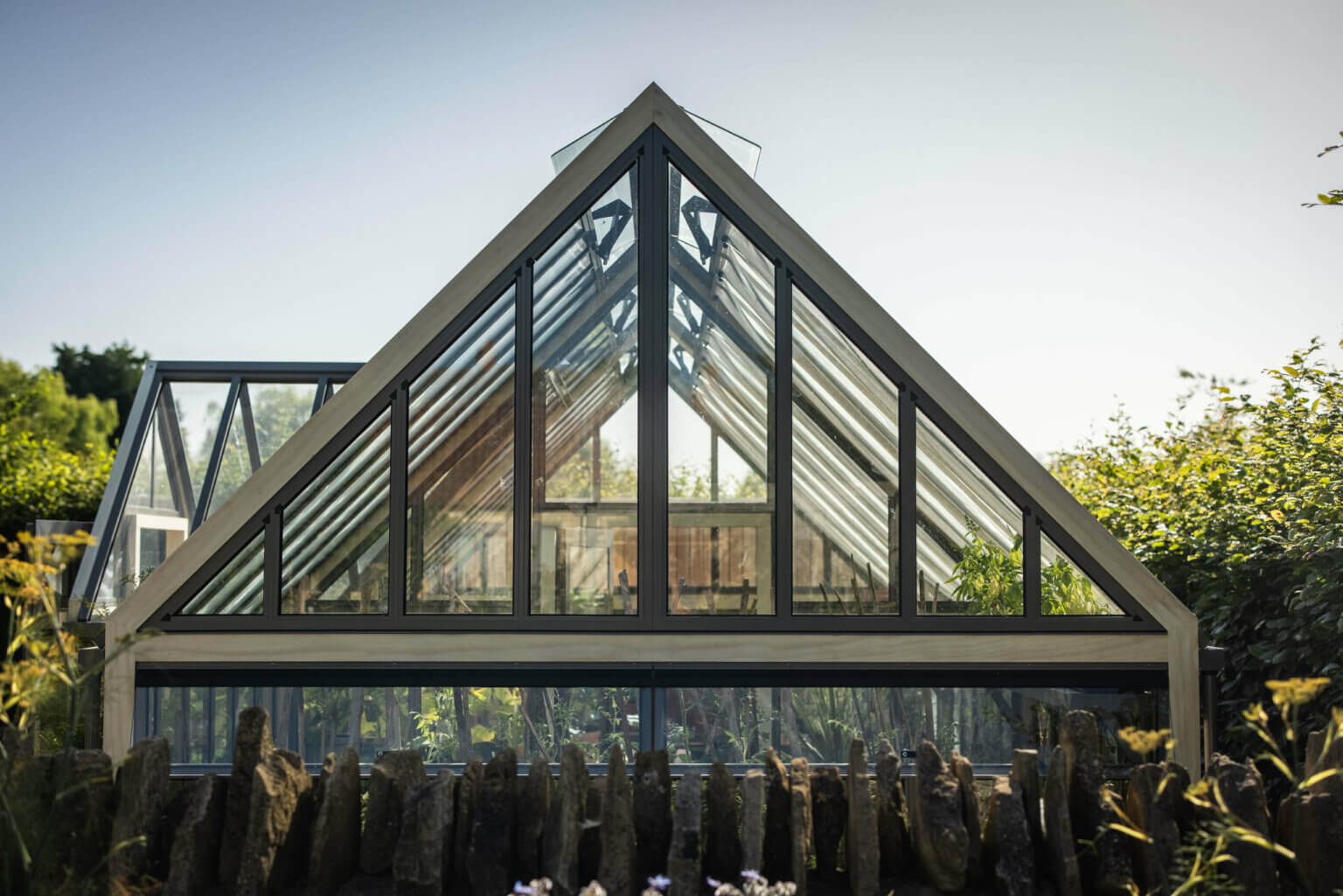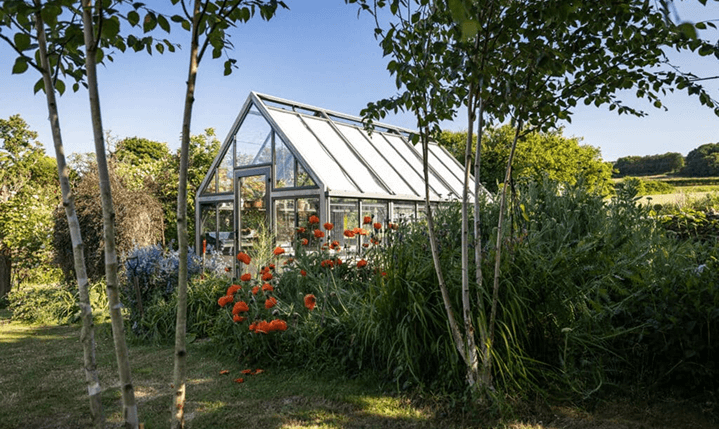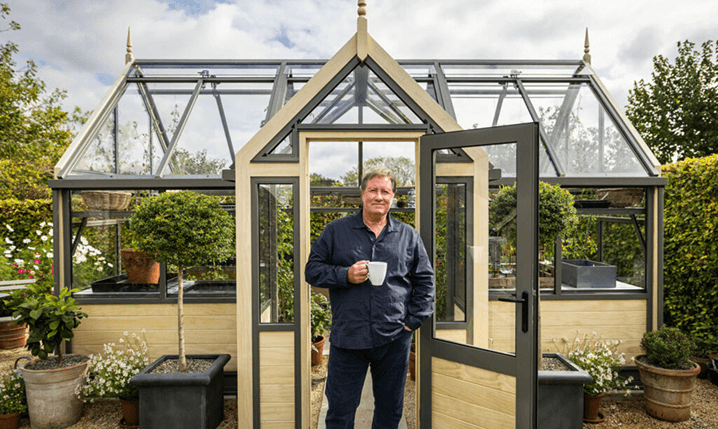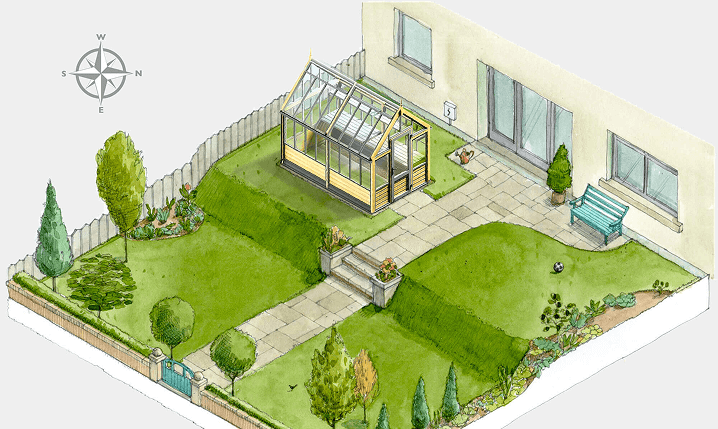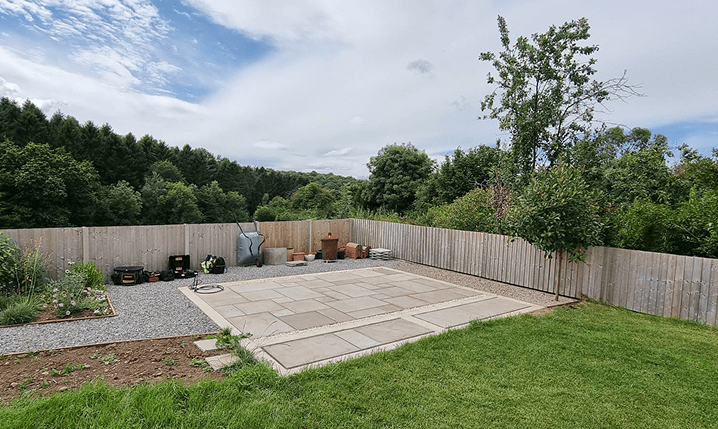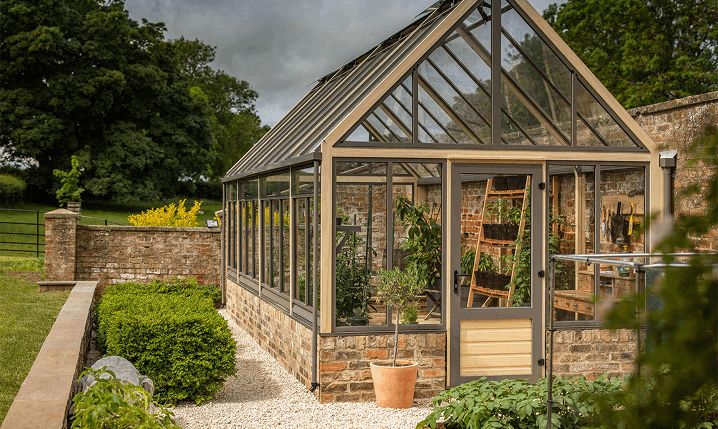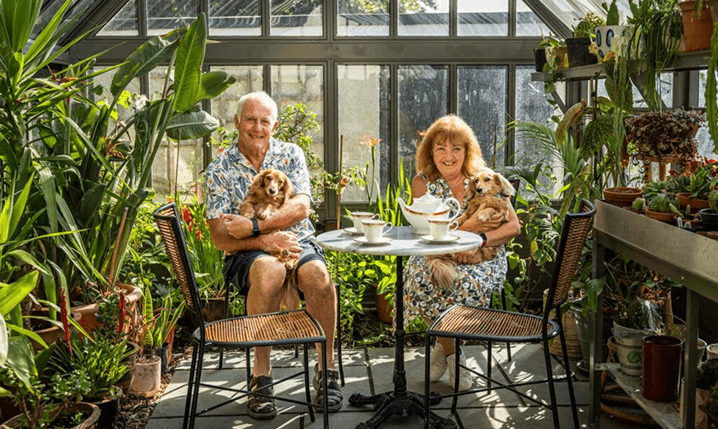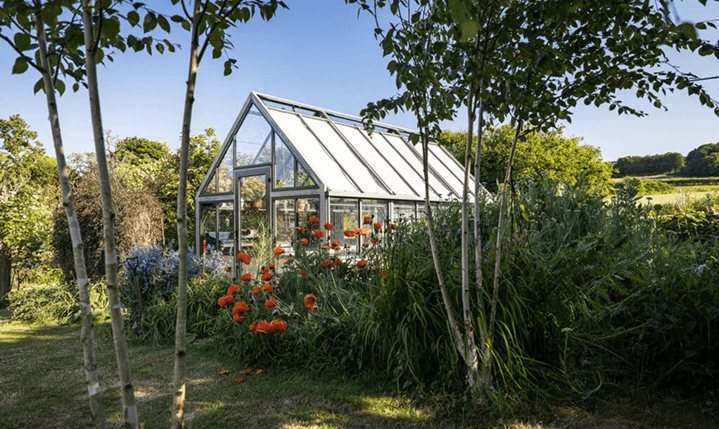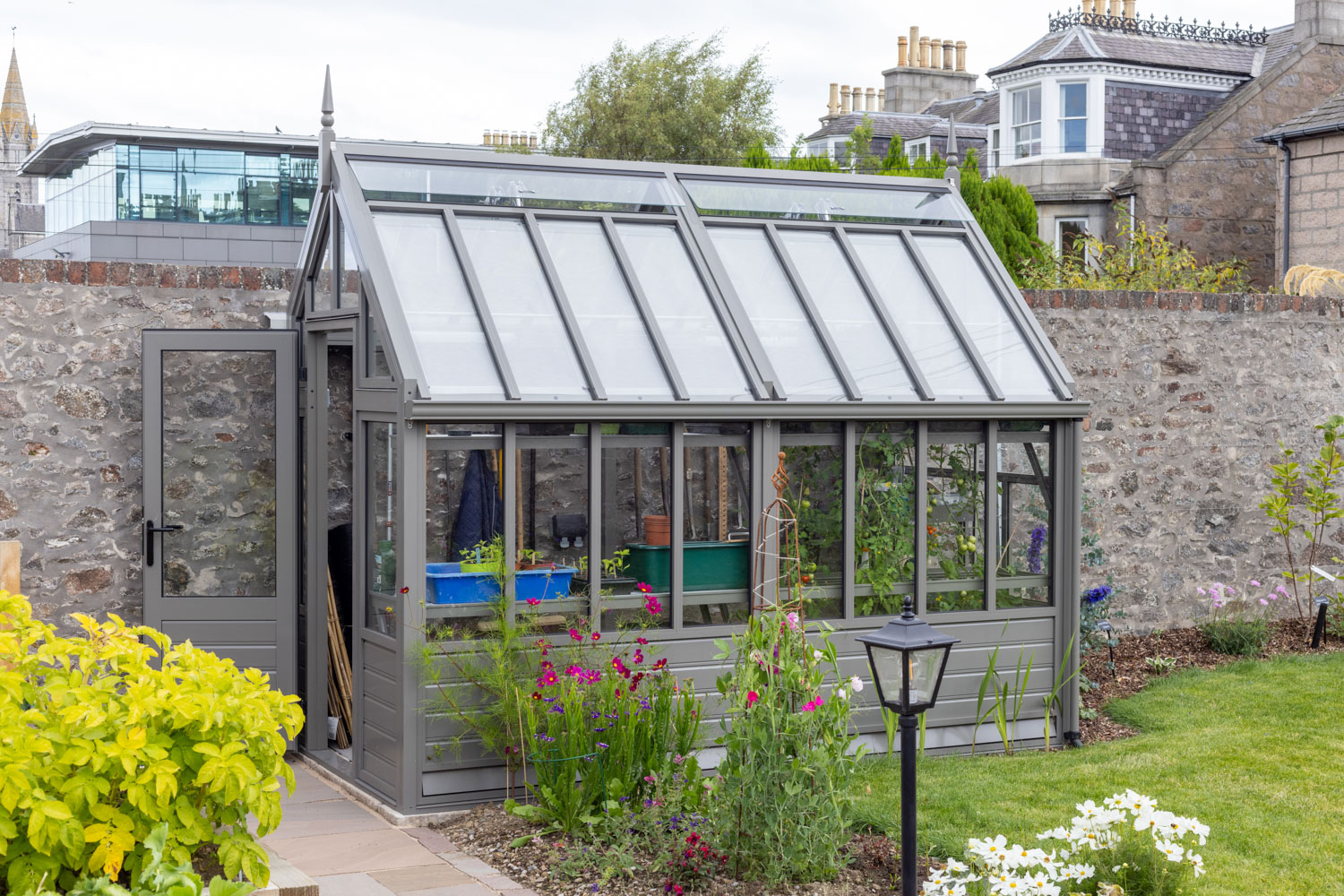

Nestled in the north of Scotland, where the growing season is often short and the climate unforgiving, Helen has created a flourishing oasis in her Aberdeen garden. A passionate gardener and competitive flower arranger, Helen has long relied on nature’s rhythms but the addition of a Cultivar greenhouse has given her the freedom to shape them.
At the heart of Helen’s garden now stands a Victorian three-quarter span lean-to greenhouse in Quartz Grey, a colour chosen not only for its elegance but for its resonance with the local surroundings. In Aberdeen, often referred to as the Granite City, quartz is more than a colour, it’s part of the landscape. This quiet nod to place anchors the greenhouse beautifully to its environment, where it sits confidently against an existing granite wall. The wall also serves a practical purpose, providing a surface to hang tools and keep everything orderly and within easy reach.
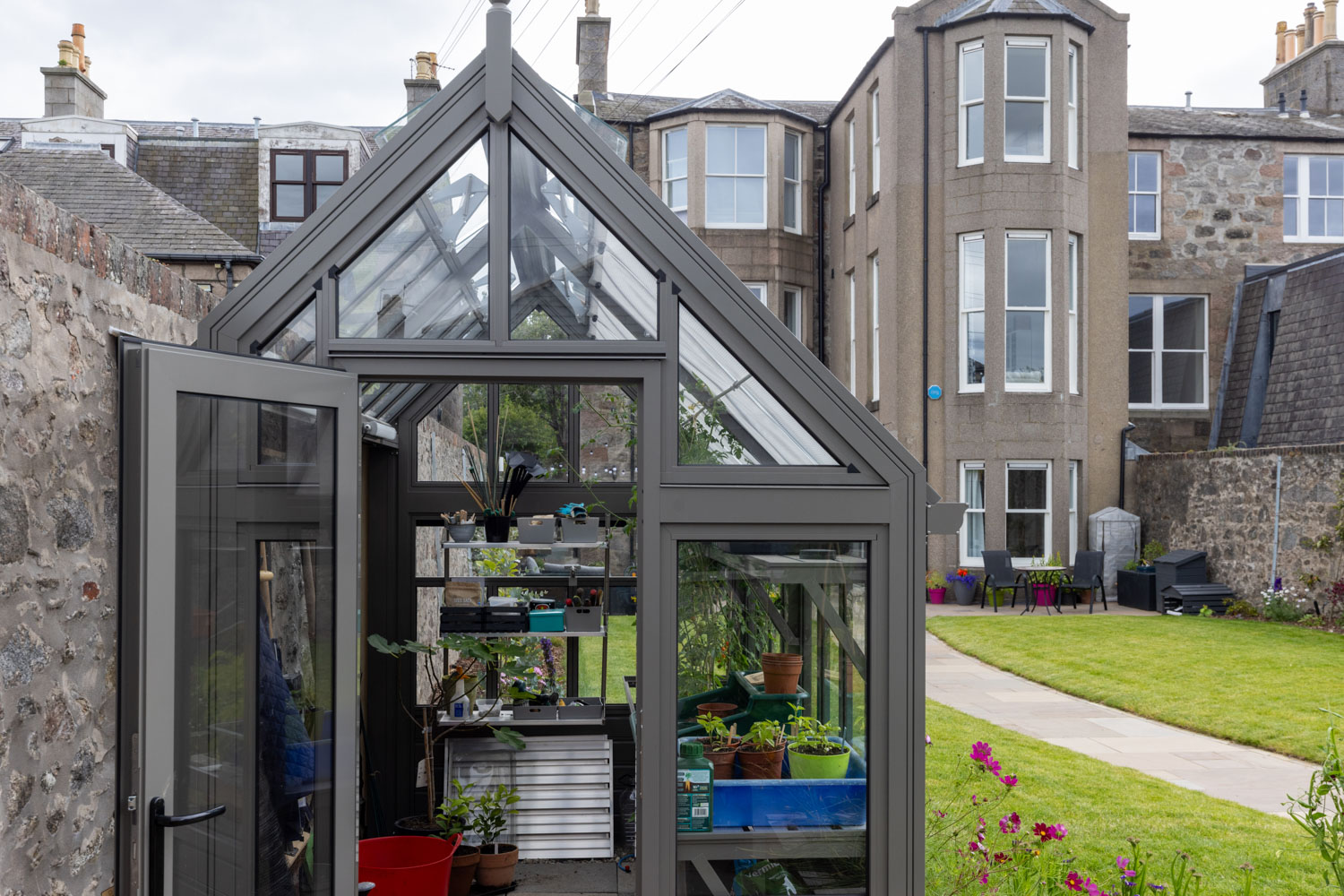

With electricity now running to the greenhouse, its use extends. Interior lighting makes it possible to tend to plants on darker days and after sunset, whilst the addition of propagators and heating mats support germination early in the year. In this northern climate, every little extension of the season makes a difference. “I’ve always wanted a greenhouse’ she says. “Before growing tomatoes and chillies outside was quite challenging.” Once considered a luxuryor simply too difficult to grow outdoors both are now a regular feature of Helen’s planting schedule. The warmth and shelter of the greenhouse have given her the ability to experiment and expand. Being able to grow under glass opens up so many more possibilities.
The greenhouse has also transformed the way Helen approaches her flower arranging. No longer reliant on what’s available from wholesalers, she now grows specifically for her designs. From seed to showcase, she controls colour, form, and seasonality. “There’s real joy in cutting something you’ve grown yourself,” she says. “It gives me the freedom to be more creative and more selective.” Her cutting bed just outside the greenhouse is continually replenished with strong stems and fresh blooms, many of which are started under glass before being hardened off outside.
Surrounding the greenhouse is a well-tended garden with traditional fruit trees : apples and pears provide structure and shade but one tree in particular hints at Helen’s deeper connection to her past. A damson tree, somewhat unusual in Aberdeen’s climate, grows near the greenhouse, a nod to her childhood in the Midlands. It’s more than a botanical curiosity; it’s a living memory. “My mother used to make damson crumbles,” she says. “I wanted to grow them not just for the fruit, but for the feeling of home they bring.”
